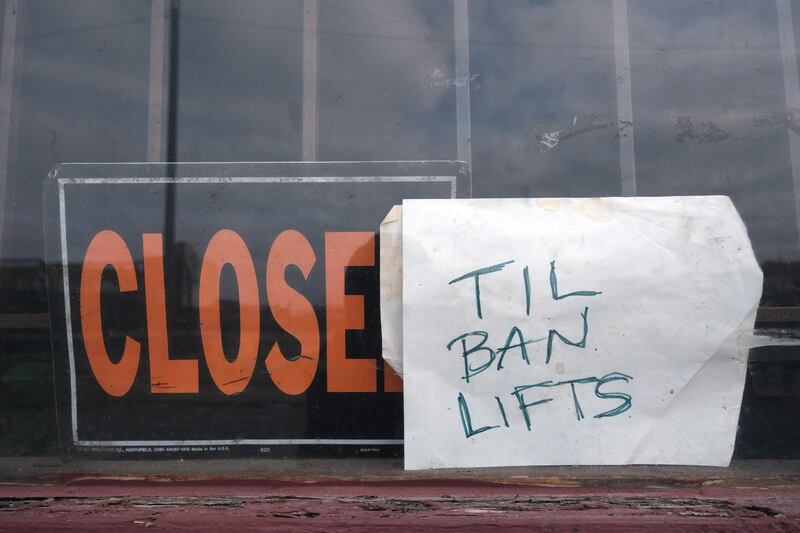Economists expect the US to suffer its largest-ever contraction this quarter and the unemployment rate to soar to a post-Depression record, followed by a recovery that will be moderate and drawn out.
The gross domestic product will plummet an annualised 25 per cent from April through June after a smaller setback in the first quarter and the jobless rate will hit 12.6 per cent, the highest since the 1940s, according to the median forecasts in Bloomberg's monthly survey of 69 economists.
That’s dispiriting given a massive government fiscal relief effort and Federal Reserve actions aimed at shoring up the financial system, as health experts urge social distancing to combat the spread of the disease.
The downturn looks likely to be deemed as the first recession since 2007-2009 by US business-cycle arbiter National Bureau of Economic Research. The second half of the year will see a resumption of growth, according to the survey, though economists say the deck is stacked against a snap-back. The Fed is expected to keep interest rates near zero until the first half of 2022.
“Even if the economy starts to re-open in mid-May, more than 20 million Americans will have lost their job with the economy likely having contracted around 13 per cent peak-to-trough, more than three times deeper than the global financial crisis,” James Knightley, chief international economist at ING Financial Markets, wrote with his forecast submission.
“It will be a gradual re-opening of the economy, so a return to ‘business as usual’ is many months away. Throw in crippling financial losses and a legacy of defaults and it means we estimate US economic output won’t return” to the late-2019 peak until mid-2022 at the earliest, Mr Knightley said.
What’s more, years of robust job creation that pushed the jobless rate down to a half-century low of 3.5 per cent will prove a distant memory. The unemployment rate is projected to fall gradually after peaking in the second quarter, yet it will only drop to 8.1 per cent in the final three months of 2020. Even in 2022, unemployment is expected to average 5.4 per cent.
The Bloomberg survey was conducted April 3 through Thursday, when a report showed another 6.6 million Americans applied for unemployment benefits, suggesting the jobless rate is already approaching 15 per cent.
A separate survey by the National Association for Business Economics released Friday showed similar projections for first-half GDP and average unemployment over the full year. The panel of 45 forecasters -- which overlaps with Bloomberg's panel -- also expects the 10-year treasury note to yield 0.9 per cent at the end of 2020, before slowly rising to 1.5 per cent by December the following year. It stood at 0.72 per cent on Thursday.
The Bloomberg survey also showed the US economy will shrink 3.3 per cent this year, more than double the 1.5 per cent contraction for the entire world. U.S. growth will also lag behind in 2021 and 2022.







